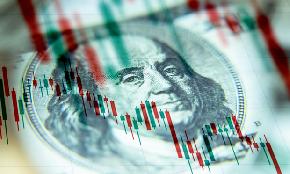IRVINE, CA-July’s national unemployment rate fell short of expectations, prompting economists to entertain the idea of a possible slowdown in job gains during the second half of the year. The Bureau of Labor Statistics reports that June’s employment gain was revised slightly lower, and July’s gain measured just 162,000.
As GlobeSt.com reported in July, job growth continued in its slow, steady pattern in June, according to the latest numbers from the USBLS. Much as in May. June figures reveal a growth of 195,000 nonfarm payroll jobs and no change in the unemployment rate, which seems stuck since February at 7.6%.
According to Chris Muoio, senior associate and economist with locally based Auction.com Research, the report, combined with other recent economic data, creates cause for some degree of concern about the economy. The report “dovetails with other economic data points that had softened in recent months, putting the possibility of a second-half slowdown back in play, especially with debt-ceiling negotiations about to resume in Washington.”
Muoio adds that despite the softer payroll gain, unemployment fell 20 bps from the month prior to 7.4%. “A modest downtick in the labor force participation rate was the primary cause of the drop in unemployment, another concerning data point.”
Marcus & Millichap is more optimistic about the report’s findings. The firm reports that when viewed alongside the steady decline in initial unemployment claims, the trends point to a resilient and steadily improving employment market. With the expansion of payrolls last month, the economy remains on track to add about 2.5 million jobs in 2013, according to the firm, easily outpacing last year’s total. In addition, the solid, though unspectacular, pace of hiring in July should reduce suspicion that the Federal Reserve will intervene and prematurely end its bond-buying programs.
Job gains in July were led by professional and business services, together with trade, transportation and utilities, M&M also reports. Manufacturers created 6,000 jobs in July, following four months of losses, automakers report continued strong sales, and education and health services grew by 13,000 workers last month. These improvements continue to buoy consumers’ mood.
M&M also reveals that hiring in consumer-related segments of the job market bodes well for the retail-property sector, and national vacancies at shopping centers slipped 10 bps in the second quarter to 10.6%, bolstering the prospect of rent growth. Full-time, office-using employment remains a bright spot in the economy as employers in primary office-using employment sectors hired more than 52,000 workers in July, capping nearly two years of job creation.
Job growth in these sectors has yet to translate into significant new space requirements, but the constant backfilling of under-utilized space with new hires suggests that employers will soon consider expansions, M&M reports. This year, national office vacancy is on track to fall 70 bps to 15.9%. Since construction is limited, it does not promise to impede additional declines in vacancy next year.

















 Copyright © 2024 ALM Global, LLC. All Rights Reserved.
Copyright © 2024 ALM Global, LLC. All Rights Reserved.